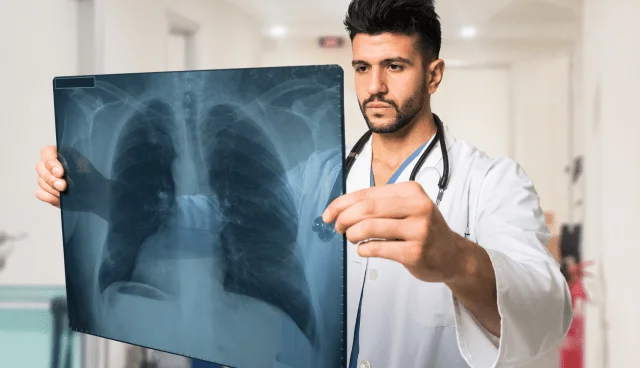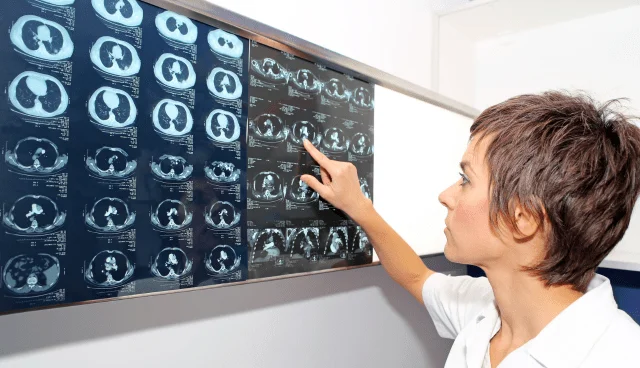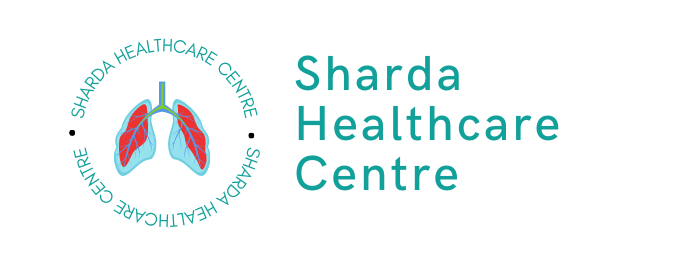
Understanding Pulmonary Embolism: Causes, Symptoms, and Risk Factors
Pulmonary embolism, often referred to simply as “PE,” is a life-threatening medical condition that occurs when a blood clot, typically formed in the legs or other parts of the body, travels through the circulation and deposits itself in the pulmonary arteries. This blockage can have severe consequences, affecting the lungs’ function and overall health. In this comprehensive guide, we will delve into the causes, symptoms, and risk factors associated with pulmonary embolism. We will also explore related conditions like pulmonary fibrosis and pulmonary edema, and discuss the importance of lung function and rehabilitation in managing these conditions.
Understanding Pulmonary Embolism
What is Pulmonary Embolism?
Pulmonary embolism, often abbreviated as PE, is a medical emergency that occurs when a blood clot, known as a thrombus, breaks loose from its original location and travels through the bloodstream. This clot can ultimately become lodged in the arteries of the lungs, causing a blockage that can restrict blood flow and oxygen exchange.
Causes of Pulmonary Embolism
The primary cause of pulmonary embolism is deep vein thrombosis (DVT), a condition where blood clots form in the deep veins of the legs or pelvis. These clots can break free and migrate to the lungs, causing a PE. Other risk factors that may contribute to the development of PE include:
Prolonged immobility, such as during long flights or bed rest after surgery. Surgery, particularly major procedures involving the lower extremities or abdomen. Trauma or injury, which can damage blood vessels and lead to clot formation. several medical issues, including clotting disorders, cancer, and heart disease. Hormonal factors, such as birth control pills and hormone replacement therapy. Pregnancy and postpartum period, when the risk of clot formation is higher. Smoking and obesity.
Symptoms of Pulmonary Embolism
- Sudden shortness of breath, often severe.
- Chest pain that may worsen with deep breaths or coughing.
- Cough, sometimes with bloody or blood-streaked sputum.
- Feeling lightheaded or dizzy.
- Sweating excessively.
- Leg swelling, warmth, or tenderness (a sign of DVT).
Risk Factors for Pulmonary Embolism
Pulmonary Embolism and Pulmonary Fibrosis
Pulmonary fibrosis is a chronic lung disease characterized by the scarring of lung tissue. Over time, this scarring can make it difficult for the lungs to function properly, leading to shortness of breath and decreased lung capacity. While pulmonary fibrosis itself does not directly cause PE, individuals with this condition may be at an increased risk due to reduced lung function and limited mobility. Additionally, some treatments for pulmonary fibrosis, such as anticoagulant therapy, can further increase the risk of bleeding and clot formation.
Pulmonary Edema and Pulmonary Embolism
Pulmonary edema is a condition characterized by the accumulation of fluid in the air sacs of the lungs, making it difficult to breathe. Although pulmonary edema is not a direct cause of PE, it can share similar symptoms, including shortness of breath and chest pain. In some cases, pulmonary edema can be a complication of PE, especially when the clot severely impairs blood flow to the lungs, leading to increased pressure in the pulmonary arteries.
The Importance of Lung Function
Lungs and Their Function
Understanding the role of the lungs is essential in comprehending the impact of pulmonary embolism and related conditions. The lungs are in charge of eliminating carbon dioxide from the body and oxygenating the blood. This vital function enables the body to maintain its energy levels and support overall health.
Effect of Pulmonary Embolism on Lung Function
When a blood clot blocks the arteries in the lungs, it can lead to a condition known as pulmonary infarction, where a portion of lung tissue dies due to lack of blood supply. This can result in a decreased ability to oxygenate the blood, leading to symptoms such as shortness of breath and chest pain. In severe cases, PE can cause significant damage to lung tissue and impair overall lung function.

Lung Rehabilitation
What is Lung Rehabilitation?
Lung rehabilitation is a comprehensive program designed to improve the lung health and overall well-being of individuals with lung conditions, including those recovering from pulmonary embolism or managing conditions like pulmonary fibrosis or pulmonary edema. It typically involves a combination of exercise, education, and support tailored to an individual’s specific needs.
The Role of Lung Rehabilitation in PE Recovery
For individuals recovering from pulmonary embolism, lung rehabilitation can be a crucial part of the healing process. These programs are designed to help patients regain lung function, improve physical stamina, and alleviate symptoms such as shortness of breath. Through targeted exercises and education on breathing techniques, patients can enhance their lung capacity and overall quality of life.
Conclusion:
A dangerous medical disorder with potentially fatal effects is pulmonary embolism. Recognizing the causes, symptoms, and risk factors associated with PE is essential for early diagnosis and prompt treatment. It’s also important to understand how conditions like pulmonary fibrosis and pulmonary edema can impact lung health and contribute to the risk of PE. Finally, lung function and rehabilitation play a critical role in managing these conditions and improving the overall quality of life for affected individuals.
If you suspect you or someone you know may be experiencing symptoms of pulmonary embolism, seek immediate medical attention. The outcome of this potentially fatal illness can be greatly affected by early care. Remember, knowledge and awareness are key to preventing and managing pulmonary embolism and related lung conditions.
